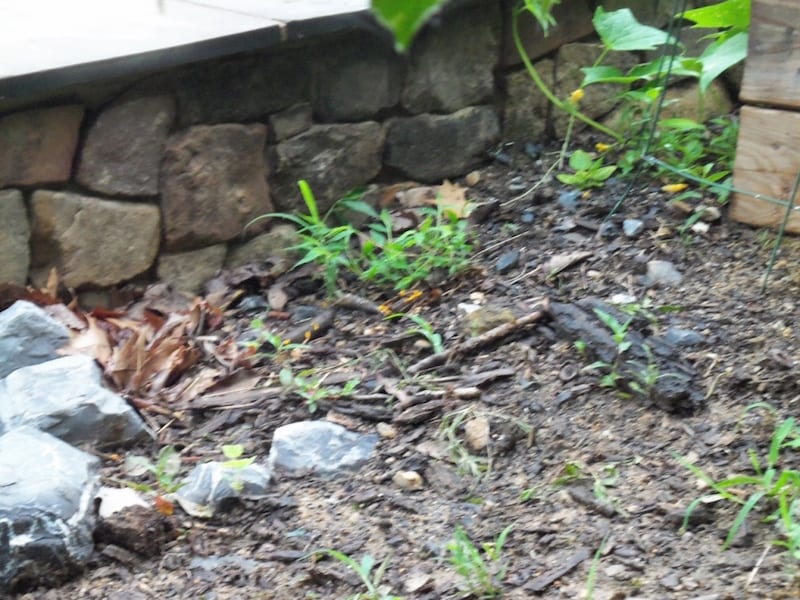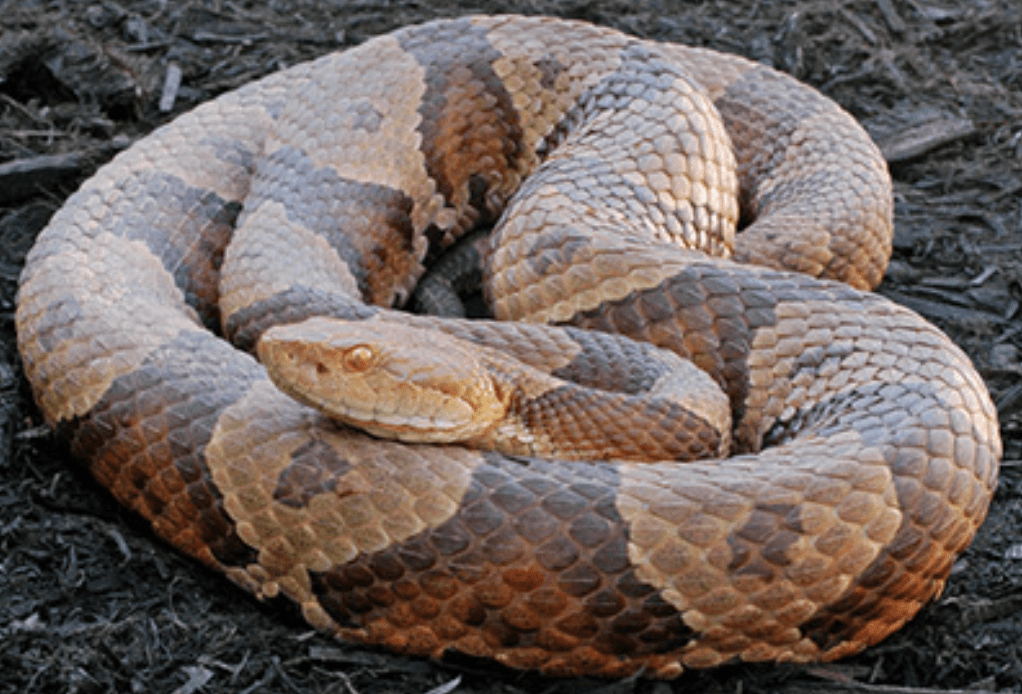 Last week while weeding Japanese stilt grass out of a bank of groundcover, I reached for a clump of grass near the rock flow below the square foot garden. Less than two inches from my hand, a fat snake slithered sluggishly into a hitherto hidden passageway in the rocks. Its dark brown spots and chestnut-colored cross bands indicated copperhead.
Last week while weeding Japanese stilt grass out of a bank of groundcover, I reached for a clump of grass near the rock flow below the square foot garden. Less than two inches from my hand, a fat snake slithered sluggishly into a hitherto hidden passageway in the rocks. Its dark brown spots and chestnut-colored cross bands indicated copperhead.
I was done weeding that patch for the day.
This wasn’t the first time I’d had a close encounter with a copperhead – or, I should say, my son David. One late afternoon in Texas, when he was not much older than a toddler, David was playing on the patio while I stood in the kitchen talking on the phone and keeping an eye on him out the window. I heard him open the back door then say, “Mom, there’s a snake and he wants to come inside.”
“Close the door, David,” I yelled, dropping the phone and running to him.
Whack, then silence.
The baby snake had been coiled, ready to strike. But thank goodness David had shut the door on his coil. Head and tail were outside, body jammed in the door.
Ewe! (Did I mention I don’t like snakes?)
I called our local herpetologist – the next-door neighbor’s twelve-year-old daughter – who was delighted to remove the snake from my premises to hers for further study. “It’s a baby copperhead,” Kim reported later that evening, “and they are more venomous when they get scared.”
By some miracle, Kim’s mother still talked to me after that.
Unlike the serpent in the Garden of Eden, most snakes are quite shy and helpful. When they sense vibrations in the air or ground, many prefer to slip away rather than confront. And as carnivores, snakes eat rodents, controlling that disease-carrying population.
 Our resident copperhead probably consumed the mice whose nests we’ve found in our woodpiles. A couple of years ago, I’d seen moulted snakeskin on the rock flow and had hoped it was a rat snake. But now I realized the skin most likely belonged to a copperhead, and the snake or its offspring likely the one responsible for biting our dog Freya last year.
Our resident copperhead probably consumed the mice whose nests we’ve found in our woodpiles. A couple of years ago, I’d seen moulted snakeskin on the rock flow and had hoped it was a rat snake. But now I realized the skin most likely belonged to a copperhead, and the snake or its offspring likely the one responsible for biting our dog Freya last year.
Some snakes eat other snakes, and that’s what locals have recommended to get rid of the copperhead. “Get yourself a black snake,” also known as a rat snake, which we’ve also seen here at Vanaprastha. But from my reading, rat snakes aren’t known to eat other snakes. In fact, rat snakes have been found hibernating with copperheads and rattlesnakes. And although non-venomous, they do bite.
Ewe! Ewe! Ewe! Baby copperheads will be born soon. Now what?



0 Comments
Trackbacks/Pingbacks